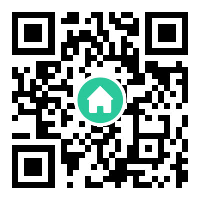Introduction to Telegram Bots
Telegram bots have revolutionized the way users interact with the popular messaging platform. These automated programs, designed to perform specific tasks, range from simple chatbots to complex tools that integrate with external services. Telegram bots leverage the platform’s open API, enabling developers to create customized solutions for productivity, entertainment, and communication. With over 700 million active users, Telegram’s ecosystem thrives on these bots, offering features like automated customer support, content delivery, and even gaming. The flexibility of Telegram bots makes them a cornerstone of modern digital workflows, bridging the gap between users and technology.

How Telegram Bots Work
At their core, Telegram bots operate through the Telegram Bot API, which allows developers to program interactions using HTTP requests. Each bot is assigned a unique token upon creation, enabling secure communication with Telegram’s servers. Users interact with bots via commands (e.g., /start or /help) or through inline queries, which let bots generate dynamic responses within any chat. Bots can send and receive messages, images, documents, and even location data. Advanced bots integrate machine learning or third-party APIs to deliver real-time information, such as weather updates, news summaries, or e-commerce transactions. This architecture ensures scalability, making Telegram bots suitable for both individual and enterprise use cases.
Popular Use Cases for Telegram Bots
Telegram bots cater to a wide array of needs. For instance, productivity bots like @GmailBot streamline email management, while @YouTubeBot allows users to download videos directly. In the realm of entertainment, gaming bots such as @GameBot offer multiplayer experiences, and trivia bots engage users with quizzes. Businesses leverage bots like @ManyBot for automated customer service, reducing response times and operational costs. Additionally, news aggregators and cryptocurrency trackers utilize Telegram bots to deliver real-time updates. Educational bots, such as language-learning tools, further highlight their versatility. The adaptability of Telegram bots ensures they remain relevant across industries, enhancing user experiences through automation.
Building Your Own Telegram Bot
Creating a Telegram bot is straightforward, even for beginners. First, users register a bot with @BotFather, Telegram’s official bot-creation tool, to obtain an API token. Developers then write code in languages like Python, JavaScript, or PHP, using frameworks such as python-telegram-bot or Telegraf.js. The bot’s functionality depends on its intended purpose: simple bots might handle basic commands, while complex ones may require database integration or AI models. Testing occurs locally or via cloud platforms, with debugging tools provided by Telegram’s API documentation. Once deployed, bots can be shared publicly or restricted to specific groups. Continuous updates ensure bots stay compatible with Telegram’s evolving features.
Challenges and Best Practices
Despite their benefits, Telegram bots face challenges like user privacy concerns and API rate limits. Developers must adhere to Telegram’s guidelines to avoid bans, such as avoiding spammy behavior or unauthorized data collection. Security is paramount; encrypting sensitive data and validating user inputs prevent vulnerabilities. Performance optimization—like caching frequent requests—ensures bots remain responsive. Additionally, clear documentation and intuitive command structures improve user adoption. Regular maintenance, including monitoring usage metrics and fixing bugs, sustains bot reliability. By balancing innovation with ethical practices, developers can maximize the impact of Telegram bots while maintaining user trust.
The Future of Telegram Bots
The future of Telegram bots is intertwined with advancements in AI and blockchain. Integration of GPT-4 or DALL-E could enable more natural conversations and creative content generation. Blockchain-based bots might facilitate secure transactions or decentralized applications (dApps) within Telegram. Enhanced payment APIs could transform bots into full-fledged e-commerce platforms. Furthermore, Telegram’s commitment to privacy aligns with trends in encrypted communication, positioning bots as key tools for secure, automated workflows. As developers experiment with new technologies, Telegram bots will likely evolve into indispensable assistants for both personal and professional tasks, redefining how we interact with digital ecosystems.
From simplifying daily routines to enabling cutting-edge innovations, Telegram bots exemplify the power of automation in messaging platforms. As technology progresses, their role in shaping user experiences will only grow more significant.












